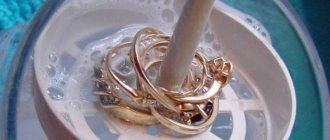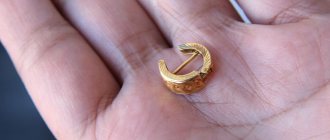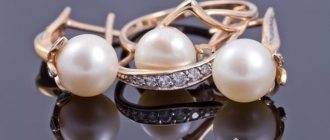From this article you will learn:
- Why do silver chains darken?
- How to clean silver chains
- What are the most effective means to clean a silver chain from tarnishing?
- How can you clean a silver chain from negative energy?
Nowadays, silver jewelry is very valuable. They perfectly complement any not only female, but also male image. However, over time, this metal loses its original appearance and becomes covered with a dark coating. Next, you will learn how to clean a silver chain.
Causes of darkening of silver
The main problem that owners of silver jewelry face is their tarnishing. The appearance of patina on silver is a natural process of metal aging, sometimes this process is enhanced by a chemical reaction to human sweat or drops of perfume.
However, in addition to the scientific explanation, there are a number of pseudo-scientific theories that explain the change in the color of silver, tarnishing, and the appearance of a dark or green coating:
- The darkening of silver is associated with the presence of serious diseases in its owner. Part of this theory may be true, since the rate at which silver jewelry develops tarnish is affected by exposure to sweat, the more frequent and intense the exposure, the faster the jewelry will darken. And excessive sweating is often a sign of endocrine imbalance.
- The darkening of the chain is associated with the presence of cancer in its owner, but practice shows that there is no relationship between the change in the color of silver and the presence of tumors.
Whatever the beliefs of the owner of the jewelry, any darkening of silver lends itself perfectly to gentle cleaning at home with commonly available means.
What causes dark plaque to appear?
The oxidation process of silver is practically unpreventable. This material, like other elements from the chemical table, actively reacts with various substances. The most harmful effects occur after contact with ozone and sulfur. Where do they meet:
- In the environment (in the air);
- In water;
- In cosmetics;
- In household chemicals.
In addition, the human body regularly secretes fat and sweat onto the surface of the skin; they contain various components to which silver reacts very aggressively. The negative impact increases when you take a shower without removing the chain, play sports, sweat profusely in it, or swim in the sea. Moreover, when taking medications, some of their components come out along with sweating, which is negatively perceived by the silver chain.
Despite this, you can always control the darkening process and periodically clean it, returning the chains to their original shine and beauty.
Dry cleaning
Dry cleaning silver items requires special care as silver is a fairly soft metal and the abrasive particles from the cleaner can leave small scratches on the surface which will dull the shine of the item.
How to clear the chain yourself? The following products can be used as the main methods of dry cleaning:
- GOI paste is not the most common household product, but it is the most effective for dry cleaning of silver surfaces. The paste is a greenish substance somewhat reminiscent of plasticine. To clean the chain you will need a very small amount of it. An additional advantage of using the paste is that it not only cleans, but also polishes the metal surface. The paste must be applied to the surface of the chain and rubbed; all manipulations must be carried out with a soft cloth. This method is good for massive jewelry, since the paste can get stuck in small gaps and it will be difficult to remove it from there.
- Tooth powder or toothpaste - all actions can be carried out by analogy with the use of GOI paste, the only difference here will be the ability to wash off the remaining powder or paste that has clogged between the links of the chain.
- Baking Soda – Fine baking soda also works well for cleaning silver, but not when used in powdered form. It must be wetted with water to a paste-like consistency. Dry powder will inevitably leave micro scratches on the surface.
- Polishing with cloth does a good job of removing minor deposits and darkening on the surface of silver, but it will not cope with intense stains and oxidation. Polishing will be an excellent final part of cleaning the chain after pre-treating the dirt with soda, tooth powder or paste.
No. 1. Soda
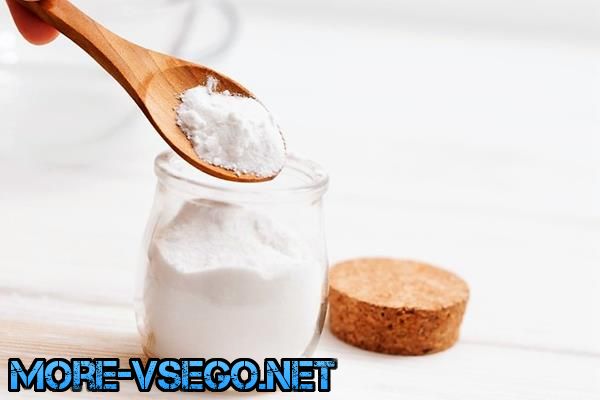
Everyone has baking soda powder and should use it. The composition forms a reaction, so plaque and dirt flake off. Baking soda can be used using dry or wet methods.
Method 1 – dry
Sprinkle baking soda onto the fabric until it forms a thick, straight line. Place the chain and wrap. Start wiping with your hands, then pinch and remove the jewelry by the edge.
Method 2 – wet
Mix baking soda with filtered water to obtain a paste-like consistency. Wipe the chain with it, taking the required amount onto a napkin. Finally, rinse and let dry.
Wet cleaning - standard means
Wet cleaning of silver items is the most gentle care option. For products with small parts where cleaning agent may remain, wet cleaning will be the most effective option. How and with what means can you clean a silver chain at home? Here are the most common methods:
- Cleaning silver with raw potatoes - one of the most effective ways. To do this, you need to pour fresh potatoes grated on a coarse grater with cold or room temperature water and put the product in the same container overnight or for a day, although with slight tarnishing, even an hour is enough. After cleaning, the chain should be rinsed in clean water and wiped dry. After this treatment, the silver acquires a matte shine, and the chain looks like new.
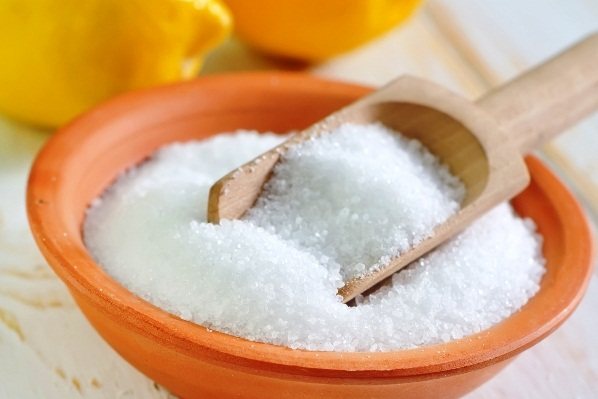
- Citric acid also copes well with all types of stains on silver; a solution in the proportion: 100 grams of product per 0.5 liter of warm water is especially effective.
- Table vinegar is a remedy that has proven its effectiveness in past times, when wealthy housewives used it to clean silver cutlery. Depending on the degree of contamination, prepare an aqueous solution of 1:1 or 1:2 parts vinegar; pure concentration should not be used.
- Household dishwashing detergents are excellent for cleaning silver from organic contaminants . Detergent diluted with water, soda and toothpaste returns silver chains, rings, and bracelets soaked overnight to their original appearance. Small parts and grooves can be further treated with a toothbrush.
- A soap solution with vodka is effective for soaking contaminated items to soften dirt that has clogged up in the recesses, but it will not cope with the clouding of silver.
- The saline solution also acts as a softener and solvent for strong stains, but to restore the shine of silver, you should use other recipes.
- Olive oil is an effective way to polish a product, but it cannot be used as a cleaning agent.
- Ammonia - briefly soaking silver items in a solution of two tablespoons of alcohol per liter of water can cope with severe stains.
- Ammonia and hydrogen peroxide are an enhanced version of the previous recipe. These two products should be mixed in warm water, and the silver should be soaked in the resulting solution for a period of time ranging from 15 minutes to 1.5-3 hours. Using undiluted hydrogen peroxide can lead to a reverse reaction - clouding and the appearance of a matte film.
- Food foil and baking soda and/or citric acid are a great way to return the chain to its original appearance. For this you need: food-grade aluminum foil, baking soda, although if this is not available, it can be replaced with calcined soda, clean water and an enamel container in which these ingredients will be boiled. Place soda in a proportion of 50 grams per 1 liter of water and a piece of aluminum foil in an enamel container and bring to a boil. After waiting for it to boil, pour this solution into the chain for a maximum of 20 minutes.
- Coca Cola – even schoolchildren know about the ability of this drink to clean the most complex and long-standing stains on hard surfaces. Contaminants that appear on silver also cannot resist the cleaning properties of Coca-Cola. To clean the chain, just soak it in a glass of drink for 1-2 hours - shine and the absence of organic contaminants are guaranteed.

How to polish
Polishing a silver chain is needed when it has not just darkened, but has lost its original beauty. To polish the product, you will need to buy a special cream, gel or spray. They are inexpensive and last many times. How to use:
- Apply the liquid to the included cloth.
- Slowly and smoothly move it along the chain, only down and up. There is no need to rub the polish in a circular motion with pressure.
- Rinse the silver chain in water.
- Wipe with a soft cloth.
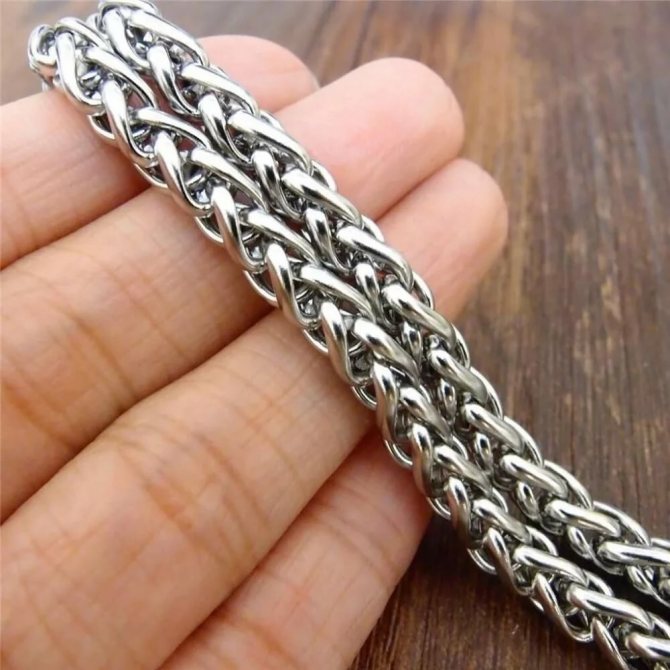
You should polish a silver item only when necessary, when it is no longer shiny. In other cases, preventive cleaning using the methods listed above is sufficient.
Additional Information! Before polishing your silver chain, read the instructions carefully. Follow the directions exactly to avoid damaging the product.
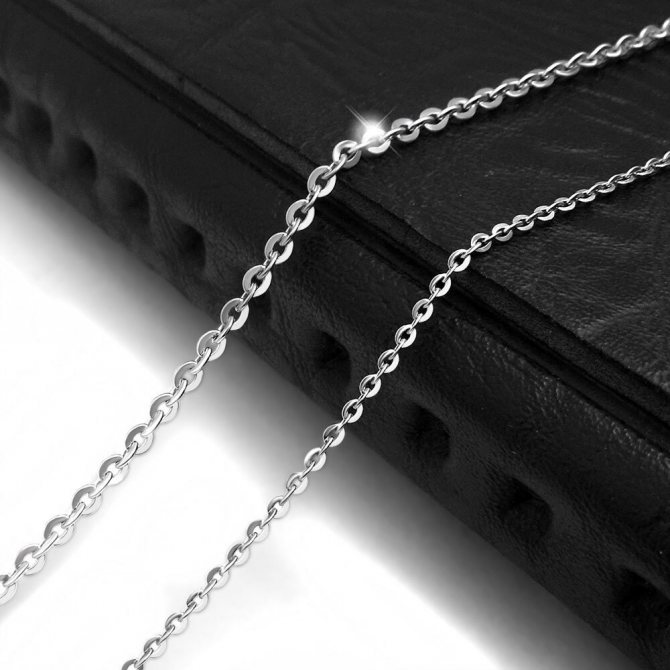
Take off the chain when you exercise - sweat will quickly darken silver.
Special means
Special products for cleaning jewelry metals and alloys, including silver, available in stores and suitable for use at home, include:
- Aladdin solution , sold complete with a brush and a bowl where products are soaked. For high-quality cleaning, 10 minutes of soaking is enough.
- Flat is a broad spectrum cleaner suitable for precious metals and alloys, as well as nickel silver, brass, copper and bronze.
- Centralin Silberpflege is a paste cleaner and polisher for silver jewelry, effective on copper, brass, aluminum or nickel surfaces.
- HG Silver is a spray that perfectly dissolves any dirt from the surface and hard-to-reach places of silver jewelry, suitable for both modern and antique products.
- Talisman is one of the most famous professional products that restores silver or gold products to their original shine.
Features of cleaning small links
The main way to properly clean a chain with small links is to use a special brush with thin bristles or a simple toothbrush. The preliminary step should be soaking in a cleaning solution prepared according to one of the current recipes. Next, mechanical cleaning with a brush until dirt is completely removed from the links.
We recommend:
How to remove Moment glue from skin at home
Cleaning a chain with a cross
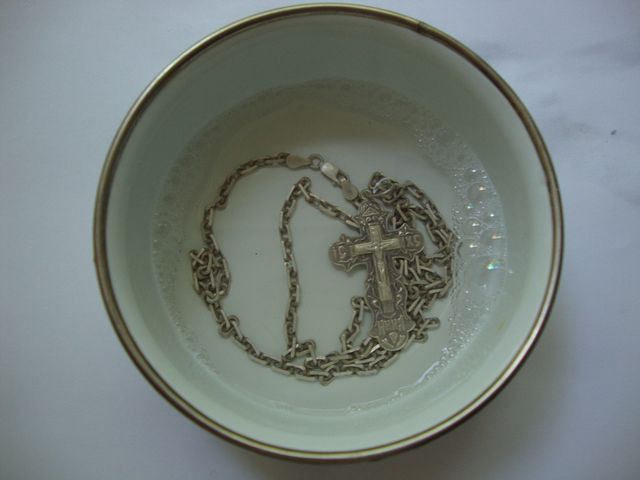
The procedure for cleaning a silver chain with a cross is practically no different from cleaning jewelry without a cross or pendant. However, it is better to remove the cross from the chain so that the surface underneath is as clean as possible.
General care recommendations
It is impossible to avoid turbidity, loss of shine and the formation of plaque on a silver product, since silver can change its appearance even in the absence of contact with skin, water, or creams.
Prevention of darkening
How to clean a silver chain? The answer is simple - it is better to minimize all the factors that lead to contamination of jewelry, so as not to ask this question.
The main reason for the darkening of silver chains is secretions from the skin glands, perfume and cosmetics. The presence of unabsorbed cream on the neck leads to the fact that dirt begins to accumulate between the links of the chain.
If drops of perfume or eau de toilette get on silver, dark spots may form on its surface, which can only be removed with a special product. Rinsing under water will be of no use.
It is not possible to completely eliminate the impact of sweat and other skin secretions on the chain, but it is not difficult to reduce the impact. It is important to remove jewelry when playing sports, going on a beach holiday, sunbathing, or sleeping.
Dubious and dangerous advice
Cleaning silver chains or other jewelry at home is an activity that does not require special skills or large financial or time expenditures. The only problem that may arise when carrying out these simple manipulations may be the use of the wrong recipe. One of the most absurd and dangerous pieces of advice is the recommendation to clean silver with household cleaning products, such as Domestos. The surface of a silver chain after treatment with chlorine-containing agents will completely darken without the possibility of restoration; the only option will be to abrasively remove the damaged areas.
Only proper and timely care of jewelry will allow the jewelry to look attractive and aesthetically pleasing; negligence and carelessness can spoil the impression of the jewelry, no matter how exquisite it may be.





